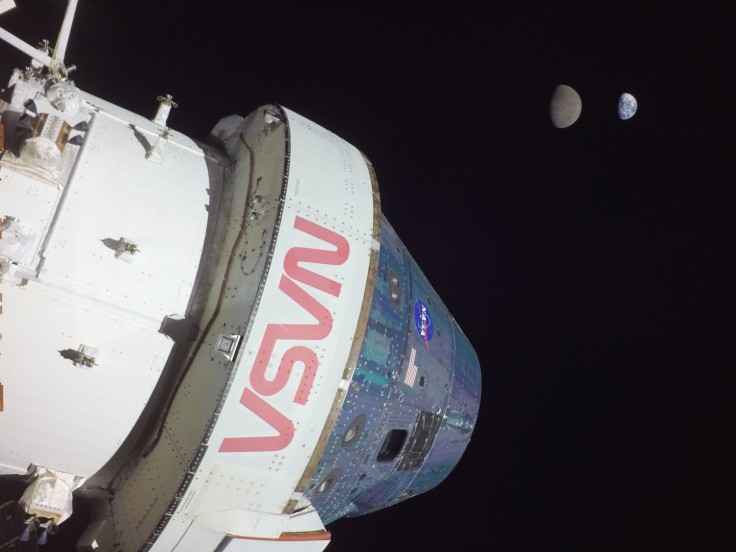NASA has shared with the public a view of the Earth and Moon from the Orion spacecraft. The stunning photo was captured by the spacecraft on Monday during the 13th day of the Artemis I mission, according to Endgadget.
Both the Earth and Moon are visible in the background of the photo taken by the Artemis I vehicle. It looks much like Apollo's photograph, showing Earth in perspective - a small planet in a much larger cosmos.

Orion Captures the Photo at About 260,000 Miles Away From Earth
Artemis I lead flight director Rick LaBrode said it's not easy to articulate what the feeling is upon seeing the spectacular image of the Earth and Moon, as cited by Ars Technica.
During a news conference at Johnson Space Center in Houston, LaBrode and other NASA officials gave an update on the mission's progress from testing the Space Launch System (SLS) rocket to launching the Orion spacecraft into space.
Artemis I mission is a precursor to crewed missions in the future, including a lunar landing which will be part of the Artemis III mission.
Orion captured the photo when the spacecraft was around its maximum distance from Earth at 268,563 miles (432,210 km). According to HypeBeast, this is the maximum distance it'll travel during the mission.
The said distance is also the farthest any spacecraft built for humans has traveled in history. This current test mission is uncrewed, meaning it doesn't have any human astronauts aboard.
The previous record of the farthest distance traveled away from Earth was set by Apollo 13 in 1970 at 248,655 miles (400,171 km).
Notably, this is the first-time space explorers intended to travel this far out through the Artemis I mission. Apollo 13 only traveled so far from Earth because the emergency flight plan of NASA required the Moon as a slingshot.
NASA Says Artemis I Mission is Going Well
The Orion spacecraft was launched earlier this month atop SLS. It is slated to return to Earth through an ocean-bound landing on December 11 off the coast of San Diego, California.
Artemis I mission is the first major spaceflight of NASA's long-awaited mission. Within the next few years, the Orion is expected to bring astronauts to the Moon.
According to NASA, the mission is going well and the agency has decided to add further objectives, including firing various thrusters for longer than intended to verify their performance.
As per Ars Technica, this will further increase the agency's confidence in the Orion spacecraft as well as in the propulsive service module provided by the European Space Agency (ESA).
According to mission manager Mike Sarafin, 31 of the 124 baseline objectives of the Artemis I mission are completed. Many of these objectives are related to the performance of the launch vehicle.
Sarafin added that of the remaining objectives, half is in progress, while the other half has yet to be completed as most of these are related to the spacecraft's landing back on Earth.
The engineers at NASA are thrilled by the performance of Artemis I after the long and costly development path to reach this mission.
However, once the vehicle was launched, they started to have an increasing confidence that they'll be able to make the lunar landing happen in the future.
Related Article: NASA's Orion Spacecraft Sends Back Its First Images of Earth










